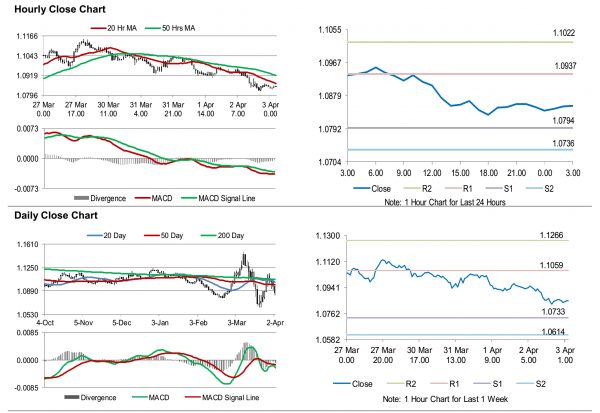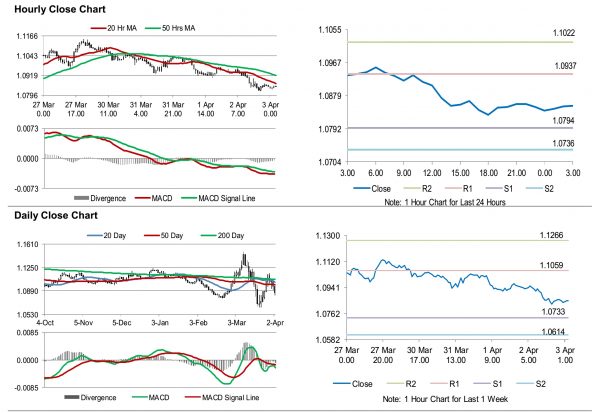For the 24 hours to 23:00 GMT, the EUR declined 0.92% against the USD and closed at 1.0850.
On the macro front, Euro-zone’s producer price index dropped 1.3% on a yearly basis in February, more than market anticipations for a drop of 0.8% and compared to a revised drop of 0.7% in the previous month.
In the US, trade deficit narrowed more-than-expected to $39.9 billion in February, hitting its lowest level since September of 2016, compared to a trade deficit of $45.5 billion in the prior month. Additionally, durable goods orders climbed 1.2% on a monthly basis in February, compared to a drop of 0.2% in the previous month. The preliminary figures had also indicated an advance of 1.2%. On the other hand, initial jobless claims surged to a level of 6648.0K in the week ended 28 March of 2020, surpassing market consensus for a rise to a level of 3500.0K and compared to a reading of 3283.0K in the previous week. Moreover, factory orders remained flat on a monthly basis in February, defying market anticipations for a rise of 0.2%. In the prior month, factory orders had recorded a drop of 0.5%.
In the Asian session, at GMT0300, the pair is trading at 1.0852, with the EUR trading marginally higher against the USD from yesterday’s close.
The pair is expected to find support at 1.0794, and a fall through could take it to the next support level of 1.0736. The pair is expected to find its first resistance at 1.0937, and a rise through could take it to the next resistance level of 1.1022.
Looking forward, market participants would keep a close watch on the Euro-zone’s retail sales for February, along with the Markit services PMIs for March, slated to release across the Euro area. Later in the day, the US nonfarm payrolls, average hourly earnings and unemployment rate, the Markit and ISM services PMIs, all for March, would keep investors on their toes.
The currency pair is trading below with its 20 Hr and 50 Hr moving averages.



 Signal2forex.com - Best Forex robots and signals
Signal2forex.com - Best Forex robots and signals




